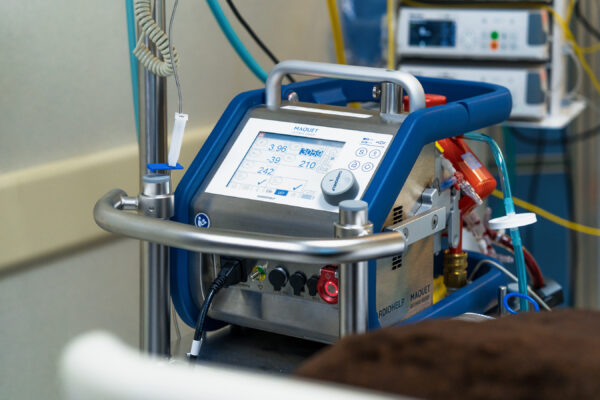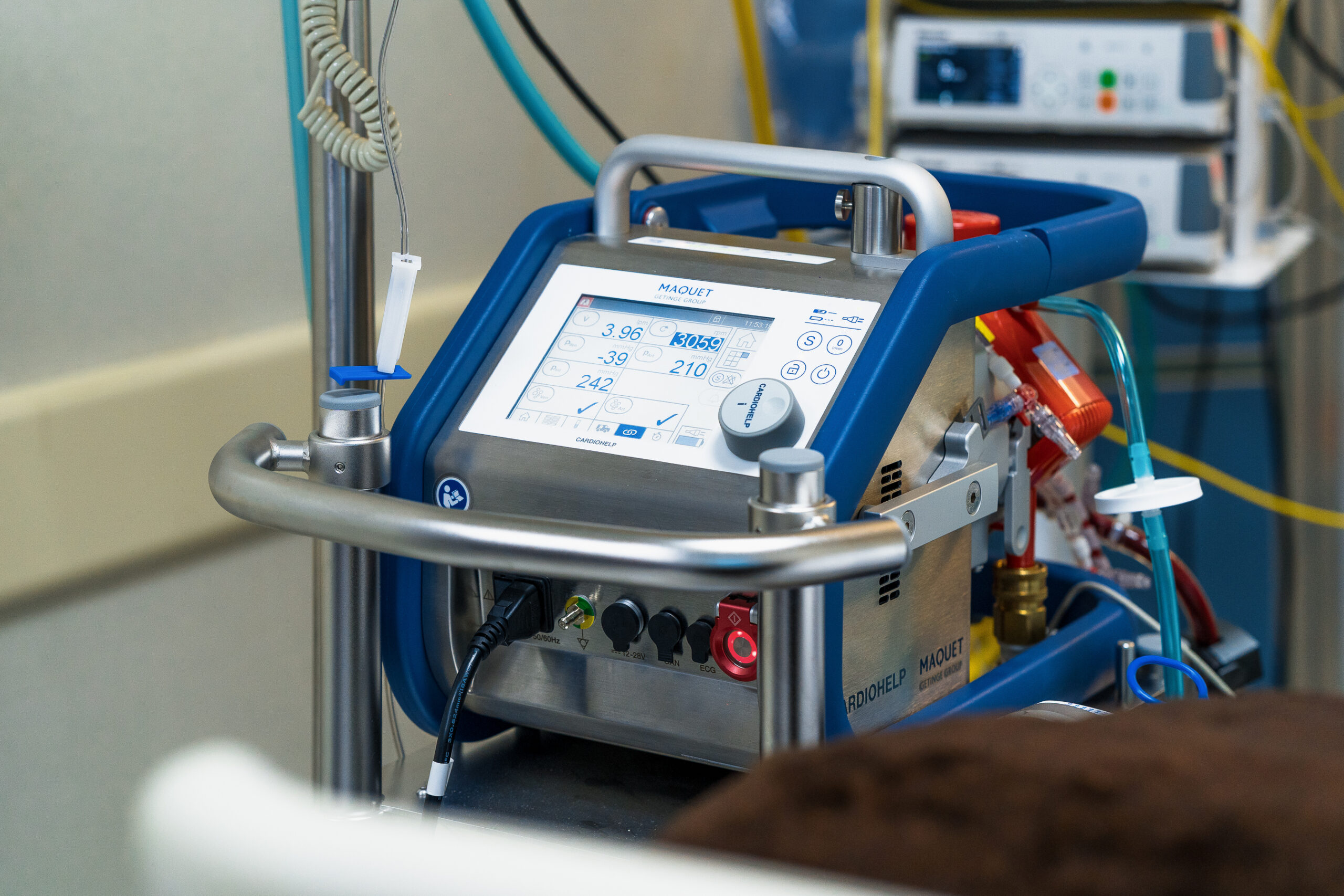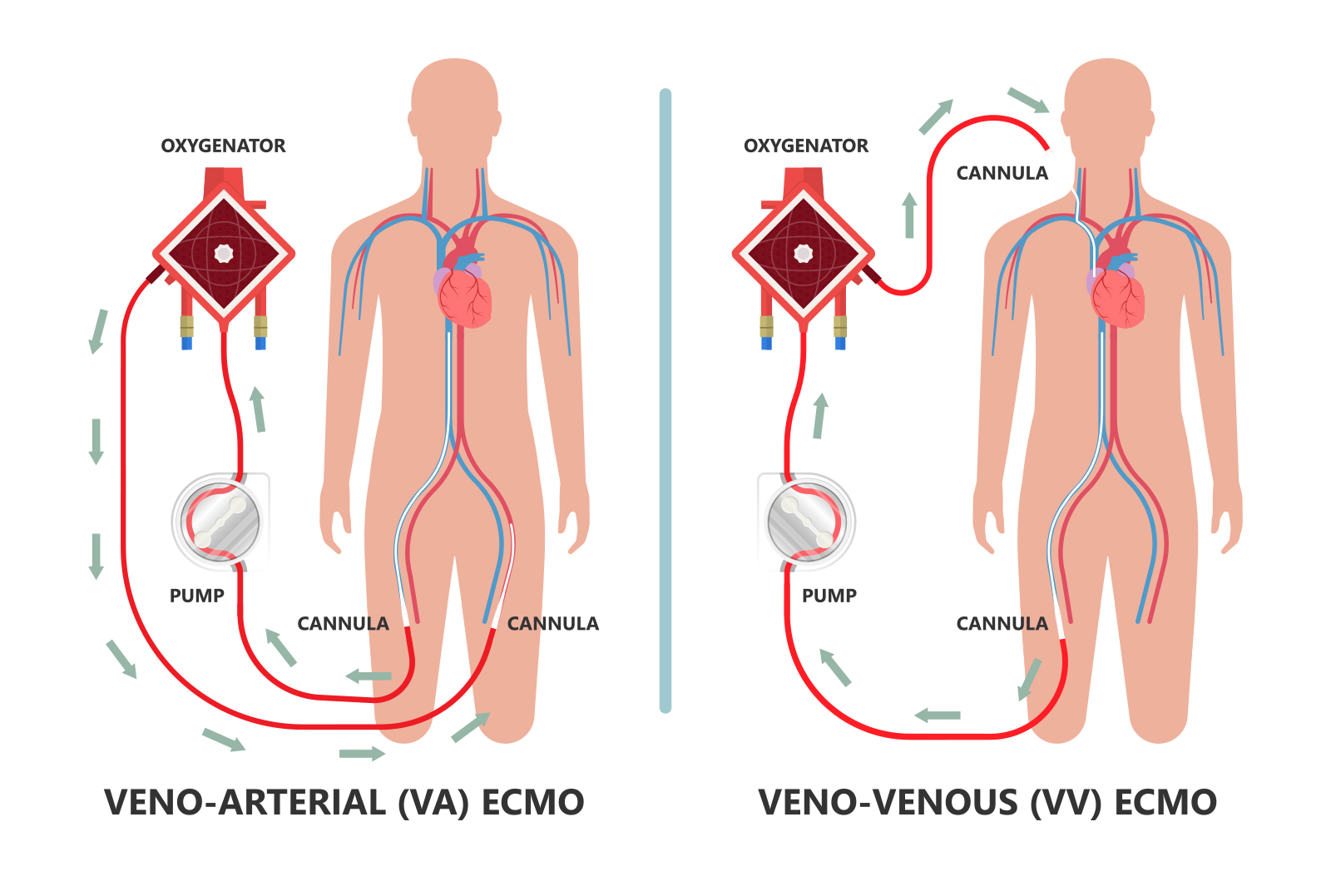
ECMO: The Life-Saving Support for Patients in Intensive Care
When the Heart and Lungs Need Help: How ECMO Keeps You Alive
When the lungs or heart stop working properly, there is an advanced option capable of providing a window of opportunity to fix them: The Extracorporeal Membrane Oxygenation therapy, also known as ECMO. This life support machine, used in Intensive Care Units (ICU), acts as an artificial lung and heart, allowing the organs to rest while the body recovers. An increasing number of high-specialty hospitals in Mexico are implementing this therapy in critical care patients for causes such as severe respiratory failure, shock, or during high-risk heart surgeries. But what exactly is ECMO life support? Keep reading and learn more about this advanced therapy used for critical heart and lung failure.

What Is Extracorporeal Membrane Oxygenation, and How Does It Work?
Extracorporeal Membrane Oxygenation (ECMO) is an advanced life support technique used for patients with severe heart or lung failure. It temporarily takes over the function of the heart and/or lungs, allowing these organs to rest and heal. The way this machine works is by circulating the patient’s blood outside the body through a system of tubes called cannulas. First, it removes the blood from a large vein and passes it through a special artificial lung that adds oxygen and removes carbon dioxide. Then, the oxygen-rich blood is returned to the body, either into a vein for respiratory support or an artery for cardiac and respiratory support. The ECMO machine is typically used in intensive care units for critically ill patients when other life-saving treatments like mechanical ventilations are no longer effective.
Meet our ECMO Certified Experts
At Hospital CMQ, we have a multidisciplinary team of intensivists, cardiovascular surgeons, angiologists, and neonatal intensive care specialists certified in advanced ECMO management. Our specialists have been trained in highly specialized international hospitals to safely and effectively apply this support to critically ill patients.
Veno-Venous ECMO vs. Veno-Arterial ECMO
There are two main types of ECMO therapy: veno-venous ECMO (VV) and veno-arterial (VA) ECMO. Doctors use VV ECMO when a patient’s lungs fail, but the heart still functions properly. In this setup, the ECMO machine removes blood from a vein, oxygenates it, removes carbon dioxide, and returns it into a vein. This process supports the lungs by taking over the work of breathing, giving the lungs time to rest and recover. For this reason, patients with severe pneumonia, acute respiratory distress syndrome (ARDS), or lung damage from trauma often benefit from this type of ECMO.
On the other hand, the VA ECMO, or the veno-arterial, supports both the heart and lungs. It removes blood from a vein, oxygenates it, and then pumps it back into an artery. This method not only oxygenates the blood but also helps circulate it throughout the body. For this reason, this technique is essential for patients in cardiac arrest or heart failure. Experts rely on VA ECMO in emergencies like massive heart attacks or cardiac surgery complications. By taking over the workload of both organs, the VA ECMO can stabilize patients long enough for recovery or additional treatment.

Benefits of This Advanced Therapy
ECMO offers critical support when a patient’s heart or lungs can no longer function independently. One of its biggest benefits is that it provides recovery time. This time is especially important for the body to heal, for medication to work, or for other treatments or surgeries to take effect. For this reason, by taking over the job of oxygenating the blood and circulating it through the body, ECMO reduces levels of stress on the damaged organs, allowing them to rest and recover.
Moreover, in some cases, it helps patients recover completely from acute conditions like severe pneumonia or heart inflammation. In others, it supports the patients’ life until they can receive a heart or lung transplant. It can also be life-saving in emergencies such as cardiac arrest, significantly improving survival chances.
Trust in Expert Care When It Matters Most
If you or a loved one is facing a critical illness that affects the heart or lungs, know that advanced life support options like ECMO are available. At Hospital CMQ, our certified ECMO team is ready to provide the highest level of care when every second counts
Risks and Complications of this Life Support Therapy
While ECMO can be life-saving, it also carries certain risks, especially because it is used in patients who are already critically ill. One of the most common risks is bleeding since patients must receive blood thinners/anticoagulants to prevent clots in the machine. This can increase the risk of internal bleeding. Likewise, infection is another concern, as it requires large tubes to be inserted into blood vessels, creating possible entry points for bacteria. Additionally, other possible complications include organ damage, stroke, and in some cases, limb injuries due to poor blood flow. However, despite these risks, ECMO is often the best or only option when the heart or lungs are failing, and the benefits outweigh the complications, especially when managed by experienced and certified critical care teams.
Care of Patients Under ECMO: What to Expect
Patients on ECMO require intensive monitoring by a multidisciplinary team that includes critical care physicians, neurointensivists, nurses, cardiologists, angiologists, and other specialists. Because ECMO temporarily takes over heart and/or lung function, the care team must closely track vital signs, oxygen levels, and blood at all times. Nurses frequently check the cannulas to ensure they are secure and functioning correctly while also preventing infection at the insertion sites. In some cases, patients remain sedated and on additional life support—such as a ventilator—while ECMO is in use.
Family members should know that though the ECMO machine may look overwhelming, each part plays a critical role in supporting the patient. Our care team will communicate frequently with you, providing updates and working together to adjust the care plan. Our goal is always the same: to stabilize the patient, allow the body to heal, and gradually reduce support as recovery improves.
If you would like to learn more about our intensive care and ECMO services, schedule a consultation with our specialists.
Frequently Asked Questions about ECMO
ECMO stands for Extracorporeal Membrane Oxygenation. It is used in patients with severe respiratory or cardiac failure when the lungs or heart cannot fulfill their function of oxygenation and circulation.
The length of time depends on the patient’s condition and the underlying cause of organ failure. Generally, it can be anywhere from a few days to several weeks.
Mechanical ventilation only provides respiratory support. In contrast, ECMO provides respiratory and circulatory support.
Yes, it can also be used in children and newborns. This therapy is used especially in critical situations such as severe respiratory problems, congenital heart disease, or complications during birth.






